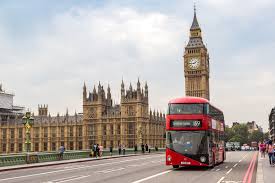By James Simons-
Coronavirus is now spreading less in London than any other region of England, according to new modelling s and could see the virus eradicated within weeks, according to encouraging new data .
Analysis released by Public Health England and Cambridge University researchers calculated that the ‘R’ reproduction rate, the average number of people an infected patient passes the virus on to, has fallen to just 0.4 in the capital and 12% of England has already been infected .The number of new cases has been halving every 3.5 days, the data says. The London rate of infections went from a peak of 213,000 people a day on March 23, to 10,000 cases by April 7, when the lockdown had been in place for two weeks.
The data which has been sent to the Government scientific advisory group SAGE forms part of the committee’s judgement on the next step in handling the pandemic.
The virus which results in deaths in 0.63 of cases led to the total lock down of the UK from March 23rd until Wednesday, May 12th after it was slightly eased by prime minister, Boris Johnson last Sunday. London lost 6,000 lives due to thee pandemic.
The team estimate that 1.8million people in London (20 per cent) have already had the disease. And they say between 10 and 53 people in the capital caught the virus on May 10. They expect the numbers to continue dropping, which is good news to Londoners who have endured the worst of the disease. The goal is to keep the rate if infections(R) below 1 for assurance that the spread of the virusis under control.
If the R is higher than one, the virus will spread more. On the other hand, where the infection rate is below one means infections will gradually fall.
Ahead
The estimates indicate that that London is now ahead of every other parts of the UK when it comes to recovering and could see all new cases eliminated by June. It is believed London had been on downward trend in the rate of infections quicker than the rest of the country because of social distancing measures that were being encouraged on public transport before the lockdown began.
The situation for the North East of England is different, and remains high. Stats reveal 4,000 daily infections with an R rate of 0.8- a sad jump in infected cases, considering the much slower start in increases at the beginning of the the pandemic. The North West is also still being hit hard, with the academics estimating the region is seeing around 2,400 new cases each day.
The worst impacted area is North East and Yorkshire is worst impacted, with an R of 0.8 – double the infection rate in London.
Age Groups
The data showed a huge variation between different age groups, warning the virus has an infection-fatality rate of around 16 per cent of over-75s but saying it was below 0.018 per cent for anyone under the age of 44 – the equivalent of one death for every 10,000 cases.
The death rate for individuals between the ages of 45 and 64 was around 0.28 per cent. While the rate was in the region of 1.8 per cent for people aged between 65 and 74.
In London, the rate of infections went from a peak of 213,000 people a day on March 23, to 10,000 cases by April 7, when the lockdown had been in place for two weeks.
Experts now say around 15 per cent of residents in the capital have now had the disease already and have built up immunity, making it more difficult for the virus to spread and may explain its low R rate of 0.4. One of the British government’s five test before a total easing of the lockdown is for the R to be below 1.




